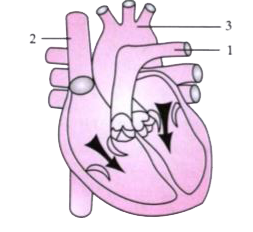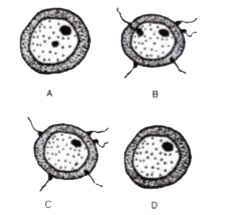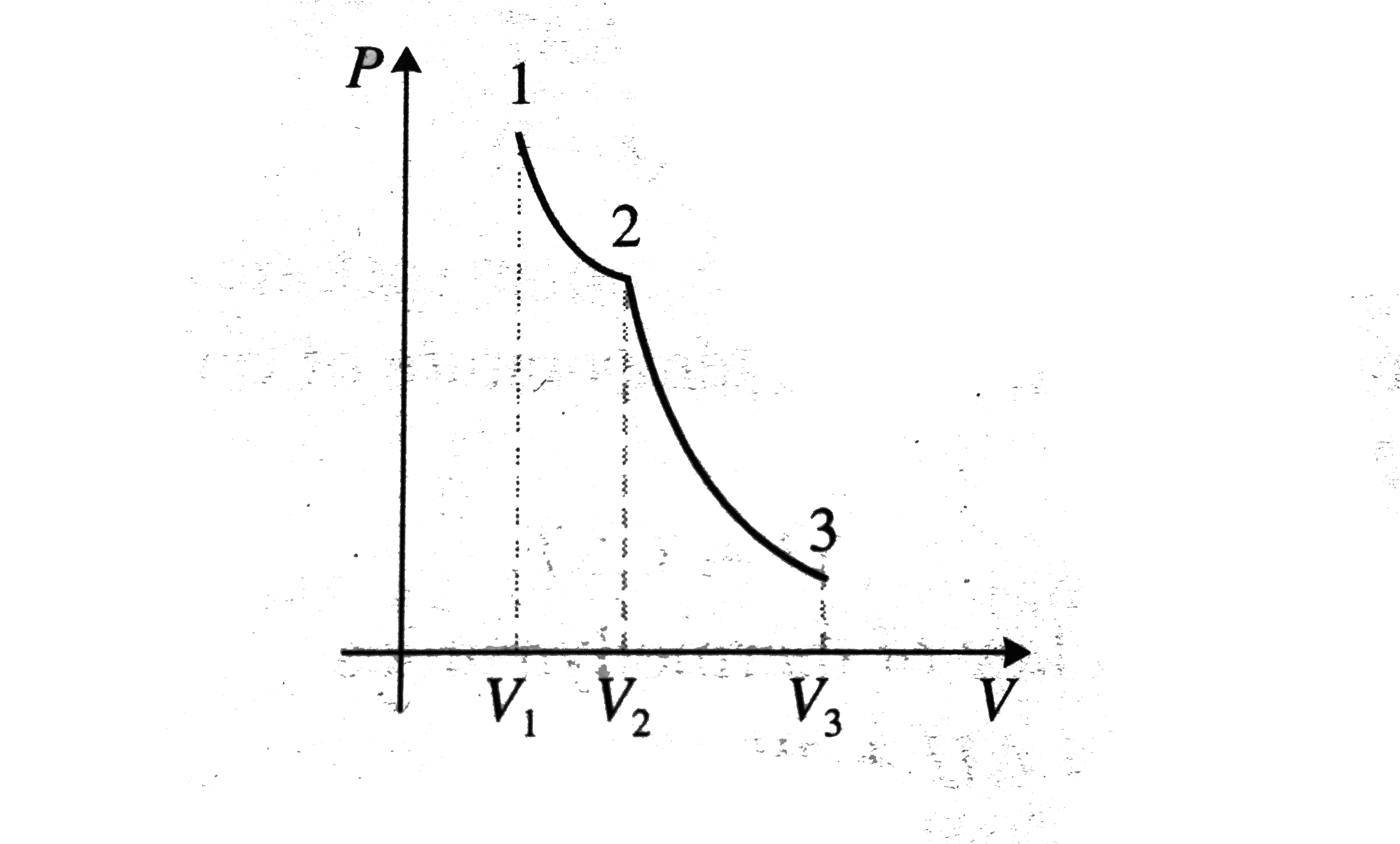Take one flower each of families Fabaceae and Solanaceae and write its semitechnical description. Also draw their floral diagrams after studying them.
Step-by-Step Text Solution
1. Selection of Flowers:
- From the family Fabaceae, we will take the Garden Pea (Pisum sativum) flower.
- From the family Solanaceae, we will take the Makoi (Solanum nigrum) flower.
2. Semi-Technical Description of Pisum sativum (Garden Pea):
- Type: Bisexual flower (contains both male and female reproductive organs).
- Symmetry: Zygomorphic (bilateral symmetry).
- Whorls:
- Calyx (Sepals): 5 sepals, fused (gamosepalous).
- Corolla (Petals): 5 petals with vexillary estivation (1 posterior petal, 2 lateral standard petals, and 2 fused petals forming a keel).
- Androecium (Stamens): 10 stamens in a diadelphous condition (9 + 1 arrangement).
- Gynoecium (Carpels): 1 monocarpillary superior ovary.
3. Floral Diagram of Pisum sativum:
- Draw a diagram showing:
- 5 fused sepals at the base.
- 5 petals arranged in vexillary estivation.
- 10 stamens with 9 fused and 1 separate.
- A single superior ovary.
---
4. Semi-Technical Description of Solanum nigrum (Makoi):
- Type: Bisexual flower (contains both male and female reproductive organs).
- Symmetry: Actinomorphic (radial symmetry).
- Whorls:
- Calyx (Sepals): 5 sepals, fused (gamosepalous).
- Corolla (Petals): 5 petals with valvate estivation (touching but not overlapping).
- Androecium (Stamens): 5 stamens, epipetalous (attached to petals).
- Gynoecium (Carpels): 2 bicarpillary ovaries.
5. Floral Diagram of Solanum nigrum:
- Draw a diagram showing:
- 5 fused sepals at the base.
- 5 petals arranged in valvate estivation.
- 5 stamens attached to the petals.
- 2 carpels forming the ovary.
---
- From the family Fabaceae, we will take the Garden Pea (Pisum sativum) flower.
- From the family Solanaceae, we will take the Makoi (Solanum nigrum) flower.
- Type: Bisexual flower (contains both male and female reproductive organs).
- Symmetry: Zygomorphic (bilateral symmetry).
- Whorls:
- Calyx (Sepals): 5 sepals, fused (gamosepalous).
- Corolla (Petals): 5 petals with vexillary estivation (1 posterior petal, 2 lateral standard petals, and 2 fused petals forming a keel).
- Androecium (Stamens): 10 stamens in a diadelphous condition (9 + 1 arrangement).
- Gynoecium (Carpels): 1 monocarpillary superior ovary.
- Draw a diagram showing:
- 5 fused sepals at the base.
- 5 petals arranged in vexillary estivation.
- 10 stamens with 9 fused and 1 separate.
- A single superior ovary.
- Type: Bisexual flower (contains both male and female reproductive organs).
- Symmetry: Actinomorphic (radial symmetry).
- Whorls:
- Calyx (Sepals): 5 sepals, fused (gamosepalous).
- Corolla (Petals): 5 petals with valvate estivation (touching but not overlapping).
- Androecium (Stamens): 5 stamens, epipetalous (attached to petals).
- Gynoecium (Carpels): 2 bicarpillary ovaries.
- Draw a diagram showing:
- 5 fused sepals at the base.
- 5 petals arranged in valvate estivation.
- 5 stamens attached to the petals.
- 2 carpels forming the ovary.
Topper's Solved these Questions
Similar Questions
Take one flower each of the families Fabaceae and Solanaceae and write its semi-technical description. Also draw their floral diagram after studying them.
View SolutionThe diagram given below represents the human heart in one phase of its functional activities. Study the same and answer the questions that follow :

Draw well labelled diagrams of part 1 and 2 to show the structural differences between them.View Solution(a) If the image formed by a mirror for all positions of the object placed in front of it is always diminished, erect and virtual, state the type of the mirror and also draw a ray diagram to justify your answer. Write one use such mirrors are put to and why?
(b) Define the radius of curvature of spherical mirrors. Find the nature and focal length of a spherical mirror whose radius of curvature is +24 cm.View SolutionGiven below are diagrams showing the different stages in the process of fertilisation of an egg in the human female reproductive tract.
Study the diagrams and answer the questions

(i) Arrange the letters given below each diagram in a logical sequence to show the correct order in the process of fertilisation.
(ii) Where does fertilisation normally take place? What is 'Implantation' that follows fertilisation ?
(iii) Mention the chromosome number of the egg and zygote in humans.
(iv) Explain the term 'Gestation'. How long does Gestation last in humans ?
(v) Draw a neat, labelled diagram of a mature human sperm.View SolutionA device X is connected across an ac source of voltage V=V0sinωt. The current throught X is given as I=I0sin(ωt+π2)
(a) Identify the device X and write the expression for its reactance.
(b) Draw graph showing variation of voltage and current with time over one cycle of ac, for X.
How does the reactance of the device X vary with frequency of the ac? Show this variation graphically.
(d) Draw the phasor diagram for the device X.View SolutionOne mole of a perfect gas, initally at a pressure and temperature of 105N/m2 and 300 K, respectively, expands isothermally unitl its volume is doubled and then adiabatically until its volume is again doubled. Find final pressure and temperature of the gas Find the total work done during the isothermal and adiabatic processes. Given γ=1.4. Also draw the P-V diagram for the process.
 View Solution
View SolutionThere are 40 students in Class X of a school of whom 25 are girls and 15 are boys. The class teacher has to select one student as a class representative. She writes the name of each student on a separate card, the cards being identical. Then she puts cards in a bag and stirs them thoroughly. She then draws one card from the bag. What is the probability that the name written on the card is the name of (i) a girl?(ii) a boy?
View SolutionThere are 40 students in class X of a school of whom 25 are girls and 15 are boys. The class teacher has to select one student as a class representative. She writes the name of each student on a separate card, the cards being identical. Then she puts cards in a bag and stirs them thoroughly. She then draws one card from the bag. What is the probability that the name written on the card is the name of (i) a girl? (ii) a boy?
View SolutionGive a description of the family Fabaceae taking the following point into consideration :
(i) systematic position in Bentham and Hooker's system of classification
(ii) salient features
(iii) inflorescence
(iv) floral diagram and floral formula
(v) botanical names and economic importance of five common plants.View SolutionRead the following charecters and mark the correct ones for family Fabaceae.a).Flowers are arranged in acropetal manner on floral axis,b)Flowers with radial symmetry,c)Hypogynous flower,d) Albuminous seeds,e)Monocarpellary ovary
View Solution

